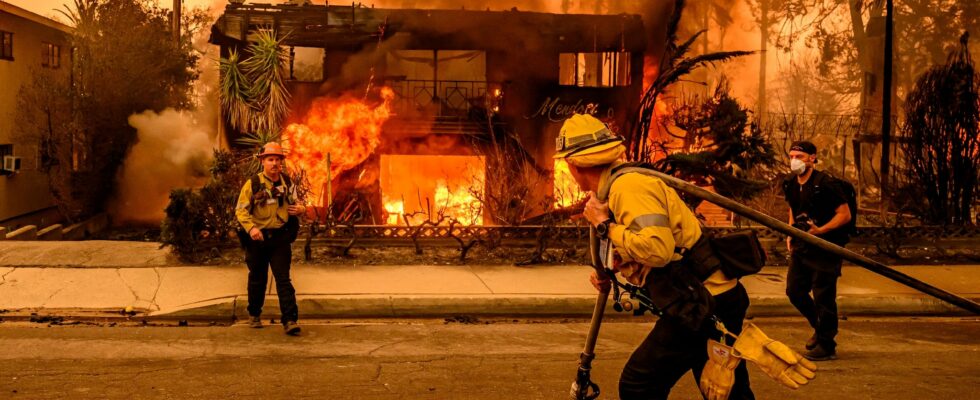When a question comes up insistently in the debate, it is because it is really worrying. The American media have been reporting on this for several years: is California becoming less and less livable? Vast subject which encompasses social, economic… But especially climatic themes. Because this sunny state in the west of the country, cradle of tech, known for its film and music industries, is currently ravaged by several still untamed fires, which have left at least eleven dead around Los Angeles.
With its Mediterranean climate and flammable plants, California is not its first fire, far from it. But climate change is exacerbating their intensity and lengthening the fire season. Their frequency has increased by around 25% in the region compared to the pre-industrial era, according to a study published in Nature in 2023. This leads to significant losses in forest cover: more than 700,000 hectares burned between 2020 and 2021, according to Global Forest Watch. That’s more than five times the size of sprawling Los Angeles. And the trend over the last twenty years is clearly upward.
Until now, the region experienced its worst fires during the summer period, between June and October. But extreme conditions boosted these winter fires: hot, dry and powerful winds combined with a lush plant cover after two very rainy years, then dried up by a chronic lack of water. “Los Angeles has only received five millimeters of rain since last May. We are not adapting to climate change, we are suffering it with a lot of damage,” climatologist Christophe Cassou soberly commented.
“January Epidemic”
For California, the World Resources Institute even speaks of a real “January epidemic”. According to his data40 times more fire alerts were detected as of January 9, 2025 compared to the first two weeks of the year between 2012 and 2024. “Most of the time, no fire alerts are detected in Los Angeles as of in the first three months of the year, and even fewer in the first two weeks. Only one other year, 2021, saw more than 10 fire alerts between January and March. This has become one of the most devastating in California in terms of forest fires,” recalls the American think tank.
Temperature-wise, the dynamic is hardly more encouraging. They have increased by more than two degrees in the south of the state since 1895. In its strategy for adapting to climate changeCalifornia expects average temperatures to increase by 2.4°C by 2050, and, in the worst case, by 4.9°C by the end of the century.
A whole different world, which is already pushing some families to pack up. The movement is not yet massive. And it remains above all regional. In a recent book, American investigative journalist Abrahm Lustgarten analyzes the movements of the 26,000 victims of the 2018 fires which hit northern California. Survivors resettled primarily in the central part of the state. About a quarter have even returned to rebuild their homes and communities, despite the risks.
Internal migrations
However, some cities have had difficulty coping with the influx of these climate refugees. Chico County, which saw its population increase by 15% overnight after the 2018 fire, has faced increased poverty, trash, sewage and housing shortages over the past two years. years following the tragedy. Will Mendocino County, located 170 miles north of San Francisco, be the next to serve as a refuge for stressed Californians? Local real estate agencies are already highlighting its postcard decor and its relatively moderate climatic risk compared to the rest of the territory.
But the competition is tough. Every year, new names appear in the list of the ten most comfortable cities to live in or the most dangerous from a climatic point of view. Many of these rankings are flawed from a methodological point of view. This does not prevent certain cities from doing well. Like Duluth, in Minnesota.
The place has many advantages: rather low temperatures, abundant water reserves – the city borders Lake Superior -, plenty of room to accommodate new residents, which already makes it a preferred destination for Californian families. . But also those from other States also faced with fires, cyclones or coastal erosion. Over the coming decades, 20 million Americans could be forced to change their address, several experts across the Atlantic have already announced. If a migration of this magnitude occurred, it would dwarf that caused by the agricultural crisis and dust ponds (dust bowl) in the 1930s. Enough to truly change the face of America.
.
